The Rio Grande Gorge is a 50-mile-long crevasse that runs from Colorado to New Mexico. It’s one of North America’s most unique and fascinating geological features. There are numerous resting volcanic cones throughout the rough landscape of deep canyons, wide plains, and rivers.
There is so much to discover and explore, from the unique rock formations to the fossils and minerals.
Origin of Rio Grande Gorge
Tectonic action in the area resulted in the formation of the Rio Grande Gorge millions of years ago. This stretching created a depression in the Earth’s surface, which allowed the Rio Grande River to flow through the region.
The numerous rock formations and volcanic structures that were once buried beneath the Earth’s surface are now visible to visitors.
The Rio Grande Gorge offers a fascinating look into the History of the earth and is a reminder of the power of tectonic action and erosion. Over time, the Rio Grande River continued to erode the surrounding rock, deepening the gorge and exposing the various geological layers.
The Rio Grande Gorge Bridge
The Río Grande Gorge Bridge, also known as the “High Bridge,” is an iconic steel arch bridge that spans the Río Grande Gorge northwest of Taos. The bridge was completed in 1965 and has become an iconic landmark of the region.
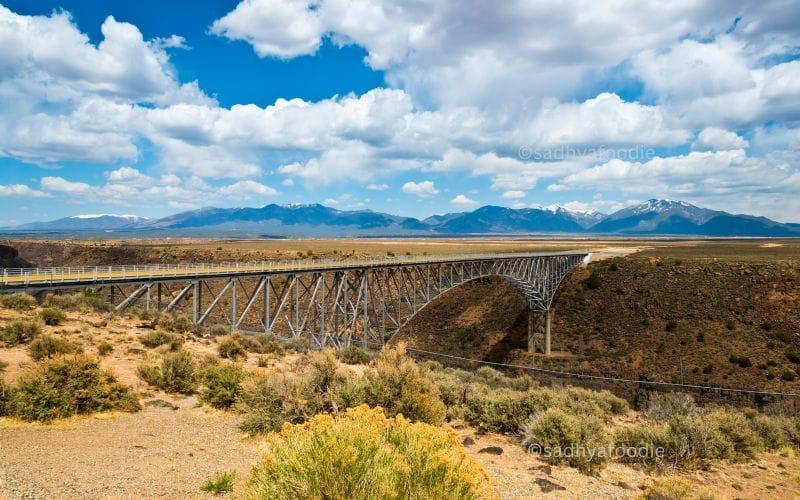
The Rio Grande Gorge Bridge is one of the most popular attractions in the area. The bridge is an impressive 1,280 feet long and nearly 565 feet above the river, making it the seventh-highest bridge in the United States.
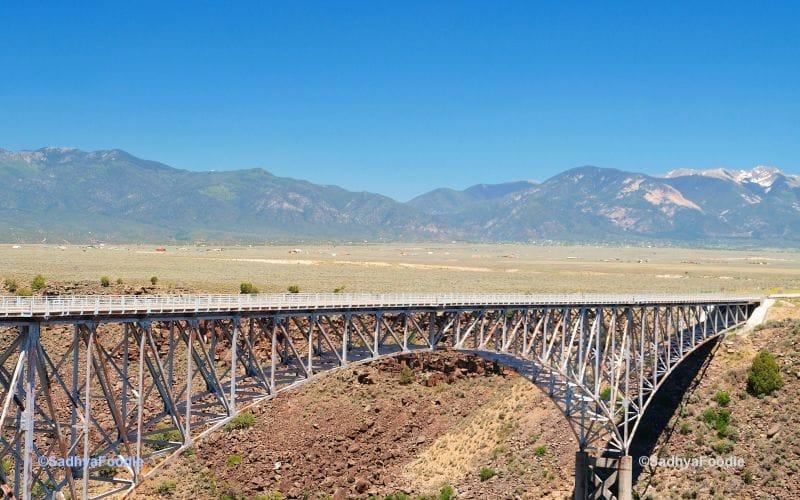
From the bridge’s sidewalks, visitors can take in breathtaking views of the Gorge, including a straight-down view into the abyss below. To the east, you can see the peaks of the Sangre de Cristo mountain.
On the west side of the bridge, a rest area offers parking, picnic tables, and restrooms, as well as access to the nine-mile West Rim Trail, which is ideal for an easy hike or bike ride.
Getting To Rio Grande Gorge Bridge
The Rio Grande Gorge Bridge is located on Route 64, about 10 miles northwest of Taos, New Mexico. The bridge is accessible by car, and there is a parking area on the south end of the bridge.
Formation of the Rio Grande Rift
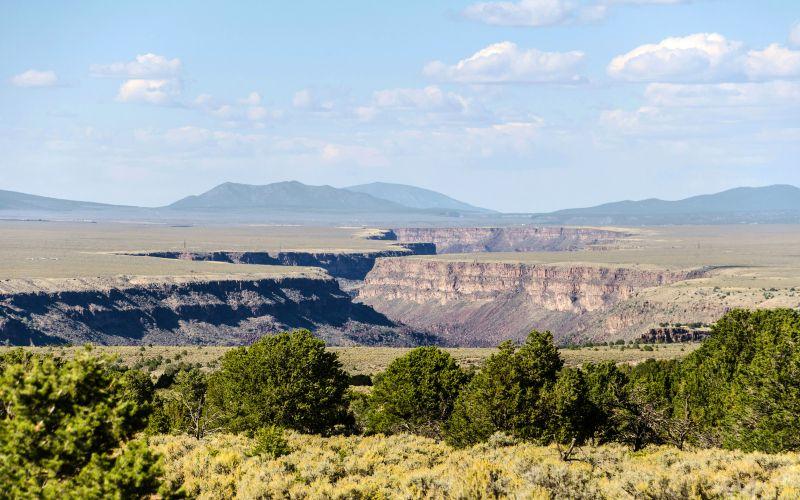
The Rio Grande Rift runs the entire length of New Mexico. It was formed when two parts of the Earth’s crust, the Colorado Plateau and the Great Plains, moved away from each other. This caused a giant crack to form where they met and over time these cracks can become bigger and deeper. This is what happened with the Rio Grande Rift. You can learn more about the geology of the land here.
The Unique Rock Formations of Rio Grande Gorge
The Rio Grande Gorge is home to a variety of unique rock formations. The area is rich in volcanic rocks, which have been shaped and eroded over millions of years. The rocks come in various colors and textures, making for a stunning visual display.
One of the most unique rock formations in the area is the Taos Pumice, which is a type of volcanic rock that’s formed from frothy lava. The Taos Pumice is light in color and has a bubbly texture that’s unlike any other rock formation in the area.
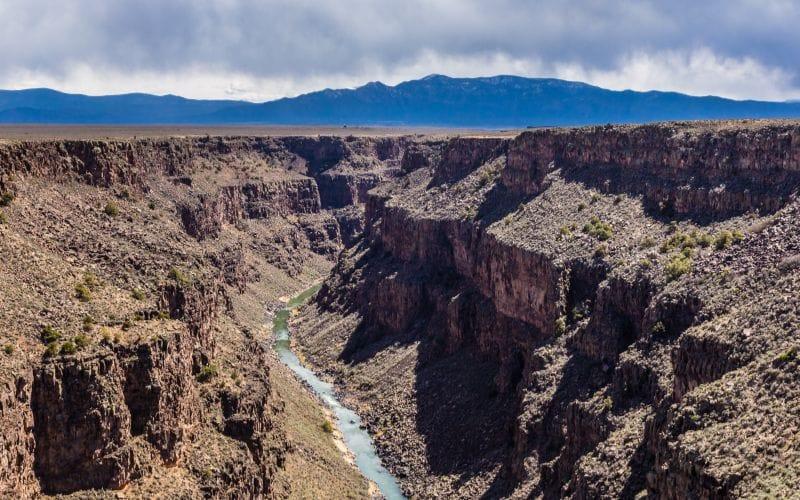
The Fossils and Minerals of Rio Grande Gorge
The Rio Grande Gorge is also home to a variety of fossils and minerals. The fossils found in the area include ancient sea creatures, such as trilobites and ammonites. The minerals found in the area include quartz, feldspar, and mica.
Landscapes of Rio Grande Gorge
The landscapes of the Rio Grande Gorge are truly unique. The area is characterized by steep cliffs, deep canyons, and rolling hills. The rugged terrain provides a home to a variety of plant and animal species, including mule deer, bighorn sheep, and various bird species.
Rocky Mountain bighorn sheep are frequently seen in the Rio Grande Gorge.
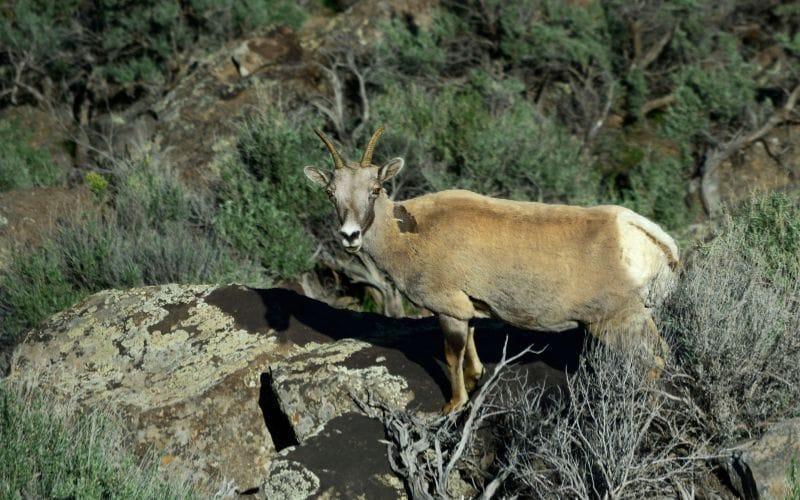
bighorn sheep spotted in Rio Grande Gorge
The fossils and minerals in the area are a testament to the Earth’s history and provide a unique insight into the region’s geological past.
The Rio Grande River
The Rio Grande River is a major river that flows through the southwestern United States. It starts in the San Juan Mountains in southwestern Colorado and flows over 1,800 miles through New Mexico, and Texas before emptying into the Gulf of Mexico.
The river runs through the Rio Grande Gorge and is an essential source of water for the surrounding communities. The river is also a popular spot for fishing and White Water River Rafting.
Rio Grande Natural Hot Springs
The Rio Grande Gorge is also home to a few natural hot springs. The hot springs are fed by underground geothermal sources and offer a relaxing and therapeutic experience.
One popular hot spring in the area is the Black Rock Hot Spring, which is located on the banks of the Rio Grande River about 12 miles north of Taos, near Arroyo Hondo. This hot spring is a series of rock pools that are fed by a natural hot spring, and it offers beautiful views of the river and surrounding mountains.
There are also several other hot springs in the area, including the Ojo Caliente Mineral Springs Resort and Spa, which is located about 20 miles southwest of Arroyo Hondo.
Rio Grande del Norte National Monument
You can download the map here
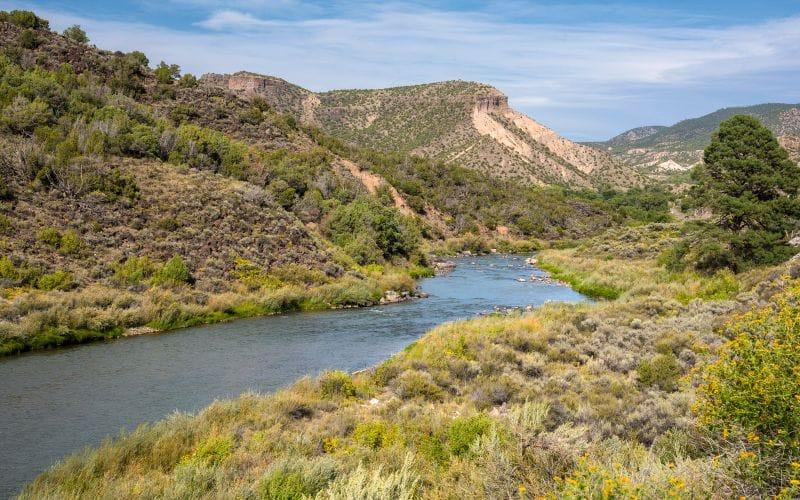
Rio Grande del Norte National Monument is a protected area located in northern New Mexico, USA. It was established in 2013 by President Barack Obama to protect the unique natural, cultural, and recreational values of the Rio Grande Gorge and the surrounding landscape.
The national monument covers more than 240,000 acres of public land managed by the Bureau of Land Management (BLM). It includes the rugged Sangre de Cristo Mountains to the east, the volcanic plateau of Taos Plateau to the west, and the Rio Grande Gorge and the river that runs between them.
The area has been inhabited by Native American communities for thousands of years, and there are numerous historic sites and petroglyphs throughout the landscape.
There are several hiking trails and campgrounds in the area, as well as scenic drives and overlooks. You can learn more about the trails here.
There are two camping areas: Wild Rivers Recreation Center and Orilla Verde Recreation Area. Find out more about local camping.
Conclusion
The rugged terrain and stunning landscapes make the Rio Grande Gorge a popular destination for nature lovers. The area’s unique geological features, including the Rio Grande Gorge Bridge, volcanoes, and hot springs, provide a fascinating insight into the past.




